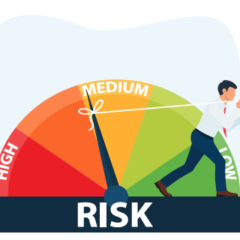Last updated on
Understanding DIC

Note: The bolded terms in this article are defined in the glossary at the end of the article.
Over the last year, a number of reports on COVID-19 have mentioned a condition called “DIC,” something many of us have never heard of before. So, what is DIC and what does it involve? We asked Dr. Umberto Campia, Assistant Professor of Medicine at Harvard Medical School and NATF Medical Advisory Board member, to weigh in.
“DIC stands for Disseminated Intravascular Coagulation and it’s a potentially life-threatening condition that can cause blood clots and major bleeding. One might wonder how it’s possible to clot and bleed at the same time, and that very phenomenon makes DIC a complicated illness,” says Dr. Campia.
DIC typically occurs in two phases. First, overactive clotting causes blood clots to form in small blood vessels. These clots can obstruct blood flow to major organs (such as the liver or kidneys), resulting in organ damage. In the second stage of DIC, the uncontrolled clotting can deplete the body’s platelets and clotting factors, leading to serious bleeding.
WHAT CAUSES DIC?
“The first thing to know is that DIC is not a standalone condition. It is triggered by another medical issue that affects the body’s blood clotting pathway,” Dr. Campia explains.
The major risk factors for DIC are:
- Inflammation from an infection or injury (for example, sepsis)
- Cancer
- Liver disease
- Recent surgery or trauma
- Tissue injury (for example, from burns)
- Pregnancy-related complications
- An immune reaction to a blood transfusion
DIC can develop suddenly (acute DIC), or can occur gradually without obvious symptoms (chronic DIC).
Signs and symptoms of DIC may include:
- Bleeding from any site in the body
- Bruising or a red/purple rash
- Blood in stools or urine
- Blood clots
- Swelling, pain, and warmth in legs
- Trouble breathing
- Chest pain
- Low blood pressure
- Confusion, memory loss, or difficulty thinking clearly
The overactive clotting and bleeding that occur with DIC could lead to life-threatening complications, including heart attack and stroke.
DIAGNOSIS & TREATMENT
Several tests may be used to diagnose DIC, including a complete blood count (CBC), and measures of blood clotting, such as prothrombin time (PT), partial thromboplastin time (PTT), and D-dimer. Your medical history (for example, recent injury or infection) is also a factor in making the diagnosis.
And what about treatment? “There isn’t one treatment for DIC itself, so we often use what we call supportive treatments – we address the immediate symptoms of the illness as early as we can. Supportive care in DIC may include transfusion of platelets or blood products in cases of serious bleeding, or anticoagulants to treat blood clots. However, our main goal is to identify the underlying cause of DIC and treat that; for example, giving antibiotics if the root cause is an infection,” says Dr. Campia.
DIC IN COVID-19?
Earlier in the pandemic, there were several reports about DIC commonly developing in patients with COVID-19. However, the American Society of Hematology (ASH) has been keeping close watch on this issue since March 2020 and has found patterns in COVID-19 patients that are not consistent with the type of DIC seen in infections like sepsis. ASH has started using the term COVID-19-associated coagulopathy to differentiate blood clotting conditions in COVID-19 from DIC.
TAKE-HOME POINTS
- Acute DIC is a potentially life-threatening complication of various medical and surgical conditions and should be promptly managed in the hospital. After recovery, patients should follow up with their primary care provider or a specialist (such as a hematologist).
- Patients with chronic DIC can typically be treated and monitored out of the hospital.
- If you have either uncontrolled bleeding or symptoms of a blood clot (including pain or swelling in your leg, chest pain, or shortness of breath), seek medical attention immediately.
UNDERSTANDING DIC GLOSSARY
Coagulopathy: A condition affecting the blood’s ability to form clots (coagulate).
Clotting factors: This term (also known as coagulation factors) refers to substances in the blood that help blood clot normally. Some clotting factors you may have heard of include fibrinogen, thrombin, or genetic factors like factor V.
Complete blood count (CBC): This blood test measures the number of white and red blood cells and platelets in the blood.
D-dimer: This blood test looks for the presence of D-dimer in the blood, which is a protein fragment found in the blood after a blood clot breaks down.
Inflammation: This term refers to the body’s natural response to injury, toxins, infections, or anything else it deems harmful. When the body recognizes an “attack,” white blood cells are released to help fight infection. Sometimes we can see inflammation; for example, the skin around a cut may turn red or swell. This is called acute inflammation. If the body perceives a foreign substance or unwanted toxin over a long period of time—toxins from cigarettes, for example—chronic inflammation occurs.
Partial thromboplastin time (PTT): This blood test measures how long it takes for the blood to clot.
Platelet: This small cell fragment helps blood clot by slowing or stopping bleeding. The medical term for platelet is thrombocyte.
Prothrombin time (PT): This blood test measures how long it takes for plasma—the liquid part of your blood—to clot.
Sepsis: A severe, body-wide response to infection that can lead to organ damage/failure or death.
REFERENCES
COVID-19 and Coagulopathy: Frequently Asked Questions. American Society of Hematology. Updated December 24, 2020.
Disseminated Intravascular Coagulation. The National Heart, Lung and Blood Institute. Updated October 8, 2019.
Patient education. Disseminated Intravascular Coagulation: The basics. UpToDate. Updated January 4, 2021.
*Originally published in The Beat – February 2021. Read the full newsletter here.



